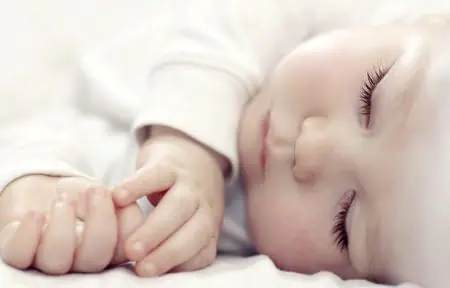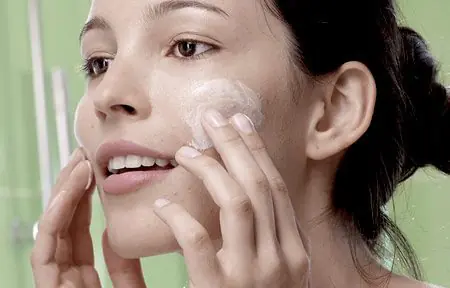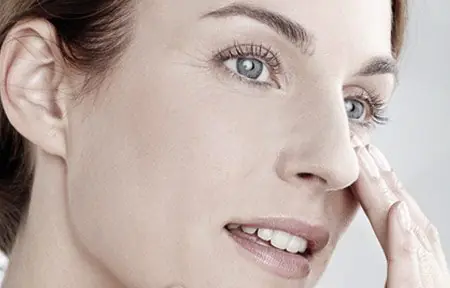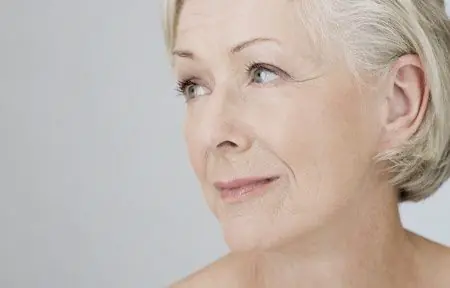Skin is a living organ that undergoes significant changes throughout a person's life, from the delicate skin of a newborn baby, through adolescence, when skin is often acne-prone, to wrinkles during aging. Each stage has its own requirements, and skin care should reflect these changing needs.
Choosing the right products to protect, nourish and repair your skin at each of these stages will help keep it healthy and looking natural, allowing you to feel your best, no matter your age.
Baby skin
The skin thickness of infants is one-fifth that of an adult. It has the same number of layers, but each layer is much thinner, which makes it especially delicate and sensitive.

Each layer of a newborn's skin is much thinner than that of an adult. Babies have lower skin pigmentation and have a harder time regulating their body temperature.
The outer layer of the epidermis (stratum corneum) is particularly thin, and its cell density is significantly less than that of adult skin. The sweat and sebaceous glands are also less active, therefore the hydrolipid film and protective acid network remain relatively weak. This means that the barrier function is inactive and infants' skin:
- less stable and durable,
- especially sensitive to chemical, physical and bacterial influences,
- prone to drying out
- more sensitive to UV.
UV sensitivity is enhanced by the fact that infants also have low skin pigmentation. Melankocytes (the cells responsible for producing melanin) are already present but not yet active, so infants should be protected from direct sun exposure.
Babies also have a harder time regulating their body temperature than adults because:
- their body surface area is relatively large,
- their sweat glands are less active,
- the blood circulation in their skin is still slow enough for adaptation.
It is important that adults remember this and control the ambient temperature.
Find out more about babies' skin, the problems it is prone to, and how to care for it in the article on baby skin.
Baby skin
At the age of 4 years, the skin and its derivatives (such as hair, nails and glands) become more mature. However, children's skin is still thin and has significantly less pigmentation than adult skin. Because self-defense mechanisms have not yet developed, young skin is especially sensitive to ultraviolet radiation. Learn more about baby skin and how to care for it.
At the age of 12 years, the structure and functions of a child’s skin correspond to the skin of an adult.

At the age of 4 years, the skin is more mature, but still very vulnerable.
Adolescence
The hormonal changes of puberty can have dramatic effects on the skin—especially on the face, shoulders, chest, and back. Increased sebum production and disruption of corneocytes can lead to irritated skin, which can become oily and acne-prone. This tends to change over time as a teenager gets older, although for some individuals, especially women, acne tendencies may continue into middle age and even later.

Hormonal changes can cause skin disorders that may disappear later.
Age from 25 to 29 years
Around the age of 25, the first visible signs of aging appear. Genetics, lifestyle and environment will determine at what stage the epidermis and dermis become thinner, but by the age of 25, the first signs of aging may already appear, usually in the form of fine lines and wrinkles.

As the skin thins, its barrier function and its natural protection against ultraviolet rays are also gradually reduced.
Collagen mass and flexibility also begin to weaken (by about 1% per year).
After 30 years
During this period, hydration and elasticity decrease and wrinkles begin to form.
- The barrier function of their skin is more weakened.
- Metabolic processes in cells begin to slow down.
- The skin's loss of natural moisture increases.
- The elasticity of the skin decreases.
Age from 40 to 59 years
Over the next few decades, the structure of the skin gradually changes:
Epidermis:
The ordered arrangement of individual layers of the epidermis is lost. Fewer cells are produced, existing cells shrink and the top layers of skin become thinner. This may lead to:
- Increased roughness and dryness.
- Hyperpigmentation (known as age spots).
- Impaired wound healing and increased risk of skin infection.
Dermis:
The connective tissues in the middle layer of the skin lose their fibrous structure and ability to bind water and elastic fibers, resulting in loss of strength and elasticity and the appearance of wrinkles.
The development of blood vessels in the dermis gradually decreases. The dermis provides the flow of nutrients to the epidermis, therefore without nutrition, both layers and the junctions between them become thinner and flatter, which leads to a loss of skin density and elasticity. This is especially common for women after menopause. Reduced blood flow also leads to loss of shine. The skin becomes less elastic and capillaries may be damaged.

Roughness, dryness, hyperpigmentation and the risk of skin infection may increase.
Decreased blood vessel development may make skin less radiant
Subcutaneous fat:
The lower layer of fatty tissue gradually decreases, resulting in a loss of volume and density.
The skin's energy also decreases and the skin becomes less resistant to pressure.
Age from 60 to 79 years
Skin regeneration slows down and UV sensitivity may increase.
- The skin's natural ability to produce lipids is reduced, leading to dryness, dehydration and more wrinkles.
- Skin regeneration slows down and the skin becomes increasingly thin as a result of loss of volume and density. The ability to heal wounds is also impaired.
- Sensitivity to UV increases and skin becomes prone to hyperpigmentation (such as age spots)

Skin infections may occur due to decreased immune function.
Over the age of 79 years, the skin's immune function declines, making it more susceptible to the effects of infections.
Learn more about the aging process, how to care for your skin and how to delay the signs of overall skin aging.
What Causes Skin Aging?
Skin aging is caused by a combination of various factors: both internal and external. Understanding that both internal and external factors can affect skin structure and function can help guide skin care product selection.
Internal factors
Our biological age determines structural changes in the skin, some of which are inevitable:
- Weaker blood supply means less oxygen and nutrients are delivered to the surface of the skin, resulting in dull skin tone.
- Less active work of the sebaceous and sweat glands leads to a weakening of the hydrolipid layer, which causes dry skin.
- The reduction in estrogen production after menopause, together with a decrease in cell regeneration, affects the structure of women's facial skin.
Genetics also play a key role in how skin ages. Our nationality, gender and skin type play a key role in how quickly signs of aging appear on the surface of our skin.
External factors
Cleansing your skin daily and reducing sun exposure can prevent premature aging.
The good news is that 80% of the factors that lead to aging are external and can be controlled.
The good news, however, is that more than 80% of skin aging is caused by external factors, including:
- Environmental factors: ultraviolet radiation, climate change and air pollution.
- Lifestyle factors: smoking, alcohol, diet, stress and lack of proper skin care.
Studies have shown that areas of the skin that are not exposed to the sun retain their tone, elasticity and ability to regenerate into old age. It is exposure to UV rays that leads to premature aging of the skin. This means that reducing our sun exposure and using proven, effective sun protection is a vital step to take to delay the signs of premature aging.
Daily cleansing and skin care using products formulated to suit the specific needs of skin type, condition and age will help keep skin healthy and delay the signs of premature aging. Read more in the article daily facial skin care.
Knowing a person's individual habits is essential when creating a care plan. Finding yourself in the unusual conditions of a medical institution, a person feels uncomfortable due to the disruption of the usual routine of life; some patients persistently strive to ensure that their usual way of life is preserved and guaranteed.
When conducting an initial assessment of the patient's condition, you should find out:
• what habits does a person have in personal hygiene and choosing clothes;
• what factors influence these habits;
• when and how often a person is used to taking a bath (shower), washing his hair;
• what a person knows about the impact of personal hygiene and clothing on health, how he relates to this information;
• whether the person has any long-term difficulties and how he usually copes with them;
• what problems a person currently has regarding personal hygiene and choice of clothing, and what problems may arise.
It is not always necessary to formulate questions exactly as they are posed above. Information can often be obtained indirectly by assessing the patient's satisfaction of other needs. In some cases, the degree to which this need is met is obvious even without questioning, but this does not mean that these issues should not be discussed with the patient and that nursing care should not be provided to him.
For the initial assessment of a person's personal hygiene and clothing needs, age is taken into account, and for the following reasons:
• in adolescence, increased sweating is observed, especially in the axillary areas; there is often acne on the skin of the face; oily hair; clothes, hairstyle, cosmetics - a way of expressing individuality, independence, sexuality;
• in adulthood, a certain routine of work and rest is established, and associated habits arise; with the help of clothes, hairstyle and cosmetics, a person often expresses his image;
• in old age, dry skin is often observed, difficulties arise with bathing, caring for fingernails and toenails, and putting on clothes due to the progression of physical weakness.
When conducting an initial assessment, you should pay attention to the following:
• Age-related physical impairments;
• Individual characteristics of physical condition;
• Skin color and damage, areas of peeling and weeping.
• Cleanliness of hands and nails;
• Condition of the oral cavity (dryness, odor), teeth or dentures, mode and technique of brushing teeth;
• Hair condition: type (dry, oily), hairstyle, presence of dandruff, lice;
• Condition of clothing: style, style, appropriateness of clothing, its neatness, perfume, cosmetics, comfort of shoes;
• A woman's awareness of the rules of personal hygiene, including during menstruation;
• A man's awareness of the peculiarities of hygiene of the foreskin.
Failure to satisfy the need for choosing and putting on clothing and personal hygiene causes a variety of problems and requires sensitivity, empathy, and ingenuity from the nurse. If it is not possible to solve all existing problems, then we must strive to at least reduce their impact on the patient.
Problems most often arise when the patient’s mobility is limited, a limb is missing, involuntary hand movements, decreased function of the senses, unconsciousness, or mental disorders. Nursing staff should pay special attention to patients suffering from the above diseases.
Difficulties in oral hygiene arise:
• In case of impaired fluid and food intake;
• If necessary, breathe through the mouth (impossibility of nasal breathing);
• For inflammatory processes in the oral cavity;
• When using medications that cause dry mouth.
Potential problems associated with unmet hygiene needs include the risk of infection of bedsores and other wounds (including post-operative wounds), intestinal infections, the occurrence of head lice, and UTIs. People who do not have mental disorders, as a rule, experience their dependence very acutely in solving problems of personal hygiene and choice of clothing - Even partial dependence (inability to bend over to pick up socks or shoes, difficulty zipping up or makes some people nervous and suffering. Dependence with putting on and taking off clothing can lead to a potential problem of hypothermia or overheating.The problems can be formulated as follows:
• The patient refuses to accept help when washing;
• The patient does not know how to brush his teeth correctly;
• The patient does not know how to fasten buttons on a shirt with one hand;
• The patient does not know how (is afraid) to cut his toenails correctly.
Lecture No. 11. Assessment of nursing care for violation of needs satisfaction.
Plan.
1. Possible problems, initial assessment of the patient, associated with a violation of the need to maintain normal body temperature, maintain a safe environment, work and rest.
For many centuries, people have paid special attention to personal hygiene. In every historical period, items and products used to care for skin, hair, nails, and teeth are constantly being improved.
Recently, most people have increased interest in clothes and their appearance. Today there are many types of comfortable clothes for any occasion.
The ability to choose clothes gives people pleasure. Already in childhood, a child is taught hygiene: brushing teeth, washing, washing hands, hair, combing one’s hair, etc. As a rule, the child knows that personal hygiene is carried out in the bathroom (shower) room (if there is one), and changing clothes, especially underwear, should not happen in front of other people (except for loved ones).
It is optimal when hygiene rules are observed by all people. Neatness and smartness, carefulness in clothing and neatness in appearance impress everyone. While negligence, untidiness, especially an unpleasant smell, lice lower a person in the eyes of other people.
Most are used to it wash your body regularly, however, the frequency of washing in the bath or shower varies from person to person: from 1-2 times a day to 1 time a week or more.
Washing in the bath or shower, in addition to the feeling of freshness and sometimes vigor, helps prevent the spread of microorganisms, including the causative agents of diseases such as hepatitis B and HIV infection.
Speaking about the prevention of hepatitis B and HIV infection, immediate “full” washing should be recommended when biological fluids of another person come into contact with the body.
Hand washing - a necessary component of daily personal hygiene. People wash their hands with hot, warm, cold water, using bar and liquid soap.
You should preferably use paper towels, especially when outside the home. Electric towels in public places today cannot be considered safe, since hot air can transfer pathogenic microorganisms to clean hands. Dry skin on the hands requires special care, since cracks provide entry points for infection.
Perineal care It is especially important for women, both for maintaining health and for a feeling of comfort, removing unpleasant odors. Women should perform this procedure from front to back, especially after bowel movements. Microbiological studies indicate that most often the causative agents of cystitis (inflammation of the bladder) in women are microorganisms that are usually found in the large intestine and then pass out along with the feces. If the perineum (from the anus to the urethra) is not properly cared for, they can enter the bladder through the short urethra.
Hair care. To keep your hair healthy, it should be combed and washed regularly. Combing is usually done every day (and often multiple times), and washing often depends on how dirty the hair is. Today there are many different shampoos, conditioners, and lotions that allow you to choose the necessary hair care product.
Nail care. The length of nails, manicure, and varnishing of nails is a matter of taste. But when caring for your nails, you need to pay attention to the skin around the nail bed and take care of it, since hangnails can serve as an entry point for infection.
Dental and oral care. From the age of two they begin to brush their teeth, although initially with the help of one of the adults.
To avoid inflammation of the gums, as well as caries, which causes tooth decay, a person must regularly and properly brush his teeth and take care of his oral cavity.
Toothpastes containing fluoristat protect teeth from caries and gums from inflammation. The correct technique of brushing your teeth, using special floss to clean the spaces between the teeth from food debris and accumulating microorganisms can also protect your teeth from caries. It is ideal if a person removes the remains of food between the teeth after each use. It is recommended to rinse your mouth with water or special solutions.
Cloth. Changing traditions and cultures are reflected in clothing. Clothing is a means of non-verbal communication. By dressing one way or another, a person seeks to express his “I”. When he feels well, he keeps his clothes in perfect condition; when a person feels bad, he is careless in his clothes.
In addition to simple skills of putting on and taking off clothes, a person must be able to choose it according to the season. Clothing directly adjacent to the skin comes into contact with it, is saturated with sweat, secreted by the sebaceous glands, exfoliating epithelium, as well as microorganisms that are present on the skin at any time of the day. In this regard, a person must have the desire and ability to change clothes in a timely manner.
Complete dependence both in choosing and putting on clothes, as well as in matters of hygiene, exists in infancy and early childhood.
Independence begins in adolescence and throughout adult life. Dependence in satisfying these needs by adults is observed only in cases of illness and injury.
Declining physical and mental abilities in old age can also make a person dependent on others for clothing and personal hygiene.
I. PRIMARY ASSESSMENT
Knowing a person's individual habits is essential when creating a care plan. Finding yourself in the unusual conditions of a medical institution, a person feels uncomfortable due to the inability to follow his habits, and some patients persistently strive to ensure that their usual way of life is preserved and guaranteed.
When conducting an initial assessment of the patient's condition, you should find out:
- - what habits have a person established in following the rules of personal hygiene and choosing clothes;
- - when and how often a person is used to taking a bath (shower), washing his hair;
- - what factors influence these habits;
- — what does a person know about the influence of personal hygiene and clothing on health;
- — how does he feel about personal hygiene and choice of clothing;
- - Are there any long-term difficulties, and if so, how does he cope with them?
- - what problems regarding personal hygiene and the choice of clothing currently exist and what may appear?
It is not always necessary to formulate questions exactly as they are posed above. Information can often be obtained indirectly by assessing the patient's satisfaction of other needs.
In some cases, the degree to which this need is met is obvious even without questioning, but this does not mean that these issues should not be discussed with the patient and attempts to provide him with nursing care.
For the initial assessment of a person’s personal hygiene and clothing needs, it is taken into account age, because the:
- in adolescence, increased sweating is noted, especially in the armpits; there is often acne on the skin of the face; greasy hair; clothes, hairstyle, cosmetics - a way of expressing one’s own “I”, independence, and sometimes sexuality;
- in adulthood, a certain work and rest schedule and associated habits are established; with the help of clothes, hairstyle, cosmetics, a person may express his image;
- in old age there are often: dry skin; difficulties with bathing, caring for fingernails and toenails, as well as choosing (dressing) clothes; physical weakness.
When conducting an initial assessment, you should pay attention to:
- — changes in physical condition associated with age;
- — individual characteristics of physical condition;
- - bruises, skin color, areas of peeling, and weeping;
- - cleanliness of hands and nails;
- - condition of the oral cavity (dryness, odor), teeth or dentures,
- teeth brushing regimen and technique;
- — hair condition: hairstyle, hair character (dry, oily), dandruff, lice (nits), hair washing habit;
- - condition of clothing: style, style, appropriateness and expediency of clothing, its neatness, perfume, cosmetics, comfortable and suitable shoes;
- — a woman’s knowledge about the peculiarities of personal hygiene, including during menstruation;
- — a man’s knowledge about the peculiarities of hygiene of the foreskin.
Didn't find what you were looking for? Use the search:
Best sayings: What kind of mathematicians are you if you can’t password protect properly? 8245 — | 7211 - or read all.



